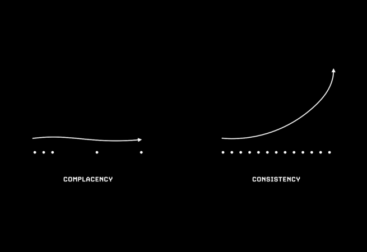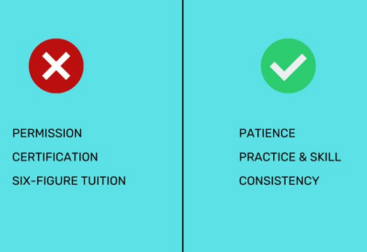Rhetoric is the ancient art of persuasion. It has been around since the 5th century B.C. when the ancient Greeks began running for office in the first democracies. You might not have heard of it, but you’ve likely used it.
Rhetoric is found everywhere, from politicians giving rousing speeches to advertisers creating memorable slogans. If you want to inspire people, motivate, or persuade them, learn the powerful techniques in this article.
Aristotle broke rhetoric down into 3 types, each appealing to a different part of the human psyche.
Logos: This is language designed to appeal to logic and reason. Appealing to logos means supporting your claims with evidence. This is the type of rhetoric used in the courtroom and in academic papers.
Ethos: This technique relies on the reputation or authority of the person delivering the message. The authority can come from the person’s achievements such as getting a doctorate or by their position in the narrative such as a witness to a crime. Ethos is the reason why 9 out of 10 dentists recommend every toothpaste in every ad ever.
Pathos: This technique is about creating an emotional connection with the audience. The power of emotion can overwhelm us even when it goes against reason. Pathos is being used when you see sad little puppies on the poster for an animal shelter.
Rhetorical Devices
Rhetorical devices add drama and memorability to your writing. We’ll start off with some common ones you may have learnt in school before moving on to the hidden gems.
Rhetorical Questions
Asking a question without expecting an answer. Rhetorical questions can have no answer or an answer so obvious that it doesn’t need to be said. For example: “Is the sky blue?” and “who knows?”. They are a great way to prompt further thinking by the audience. Shakespeare does this in the Merchant of Venice when Shylock asks: “If you prick us, do we not bleed? If you tickle us, do we not laugh?”
Hyperbole
Extreme exaggeration meant to highlight an issue and leave an impression on the audience. Former U.S. President Franklin Delano Roosevelt used hyperbole when he declared, “The only thing we have to fear is fear itself.”
Alliteration
Using repeated sounds to emphasise your point, has a similar effect to repetition: “back to basics”, “pride and prejudice” and, “Veni, Vidi, Vici”.
Rising Tricolon
A rising tricolon is a group of three terms where each one gets longer. For example, “I came, I saw I conquered” and “the truth, the whole truth and nothing but the truth”. Tricolons sound clear, strong, and memorable (see what I did there). The effect of tricolons is so powerful that sometimes we remember them when they weren’t even used. Churchill actually said “blood, toil, tears and sweat”; but we remember “blood, sweat and tears”.
Anaphora
Unintended repetition is one of the greatest sins in writing, deliberate repetition is the opposite. Anaphora is when you repeat the same word or phrase at the beginning of a series of clauses. Churchill said, “We shall fight on the beaches, we shall fight on the landing grounds, we shall fight in the fields and in the streets”. Advertisers use this device all the time to link their product to something positive, e.g. “Have a break, have a kit-kat”.
Epiphora
Like an Anaphora, but the repetition takes place at the end of successive clauses. For example: “of the people, by the people, for the people” and “see no evil, hear no evil, speak no evil”.
Asyndeton
Asyndeton comes from the Greek word meaning “unconnected”. You remove conjunctions (ands and buts) between phrases. For example: “Snap! Crackle! Pop!” Instead of “Snap, Crackle, and Pop” or “I came, I saw, I conquered” instead of “I came, I saw, and I conquered”. This helps speed up the rhythm of the writing and makes it concise and dramatic.
Polysyndeton
The opposite of Asyndeton is Polysyndeton, adding extra conjunctions. This conveys a sense of abundance and excitement and spontaneity. It adds also adds rhythm to your writing.
“Let the white folks have their money and power and segregation and sarcasm and big houses and schools and lawns like carpets, and books, and mostly–mostly–let them have their whiteness.”– I Know Why the Caged Bird Sings by Maya Angelou
Hypophora
Raising a question which is on your audience’s mind and immediately providing an answer. The difference between a hypophora and a rhetorical question is that, in a rhetorical question, the answer is not provided by the writer since it does not need an answer.
This technique neutralises the audience’s objections because it makes you seem like you’ve considered all the options before coming to your conclusion. It makes it feel like you’re having a conversation with the audience, you’re anticipating their questions and prepared to answer them.
“You ask, what is our aim? I can answer in one word: Victory.” Churchill
A note on threes
One of the things you’ll notice with these devices is that a lot of them use threes. The number three seems to have a unique significance for us humans. The Greeks considered it the perfect number, Christians have the trinity, and there are three medals at Olympic events. The reason for this significance is obscure, but we can still use it to our advantage when persuading people.
Conclusion
You may have a bulletproof argument, but you’ll struggle to convince your audience if your writing is not persuasive. The techniques outlined in this article have been used successfully for millennia to persuade and inspire readers. Be sure to use them wisely.







